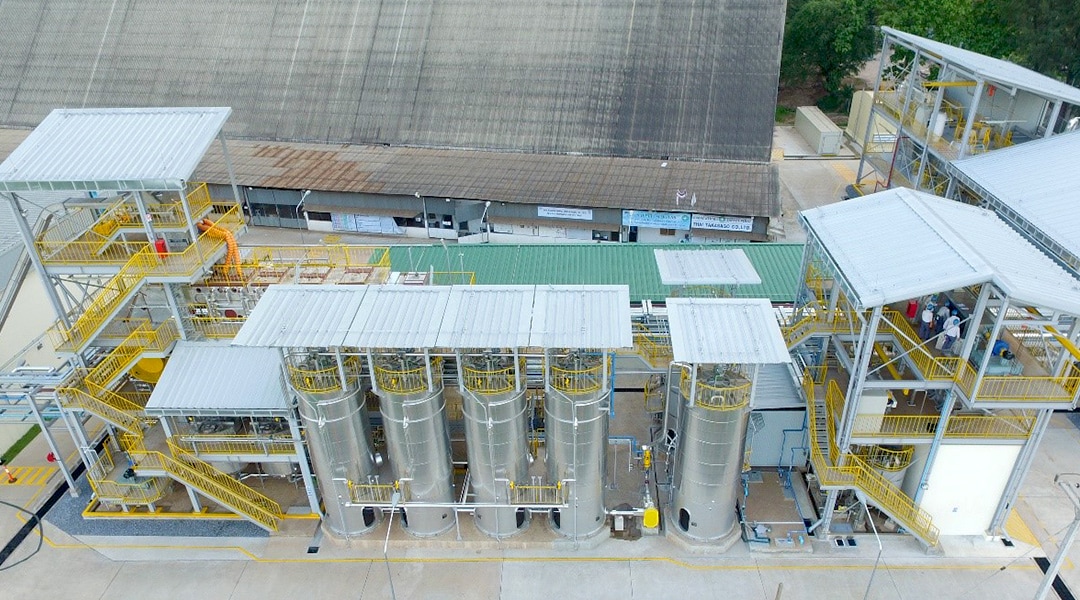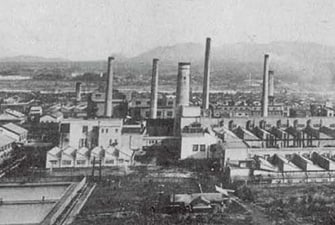#03
Sweet success for biomass technologies
The need for more sustainable manufacturing processes has led to exciting innovations in the development of new biotechnologies, notably in the global production of sugar

As the world unites in the fight against climate change – renewed in light of a stark new Intergovernmental Panel on Climate Change (IPCC) report that warns of the dangers of letting global temperatures rise by 1.5C above pre-industrial levels – four sectors require significant change to reduce emissions: transport, land use, energy and industry.
When it comes to industry, the key lies in creating sustainable manufacturing processes that conserve energy and reduce waste, water use and toxic by-products.
Recent advances bode well for future progress. New manufacturing methods are allowing companies to use water, energy and raw materials more strategically. In addition, profitable new purposes are being found for industrial and agricultural by-products that were previously discarded as waste. And here, biotechnologies are leading the way.
Realizing the value of biofuels
Take sugar cane. This is a major crop in many countries – and the world’s largest by volume. Between 2014 and 2016, 1.9 billion tons of sugar were produced per year.
Until now, sugar cane has been cultivated to meet the world’s insatiable demand for all things sweet, and also – following fermentation and distillation – to produce ethanol, a biofuel that is blended into petrol in countries such as the US, Brazil and Sweden.
Bagasse – the dry, pulpy mass left over after the sugar cane is juiced – is burned as a boiler fuel to power sugar mills all over the world, making them self-sufficient in energy. But what if a better use could be found? Could bagasse be transformed into a new, more portable energy source for the benefit of all?
Driven by the need for cleaner sources of energy, scientists from Japan’s Toray Industries have been studying the feasibility of using their membrane-separation technologies to break down the tough cellulosic fibers in bagasse into simple sugars. These sugars could then be fermented and distilled into ethanol or synthesized into other biochemicals for use in bio-polymers, such as polylactic acid (PLA) or polybutylene succinate (PBS). The resulting biofuel, biochemical or biopolymer would then be easily transportable to wherever it was needed.
The advantages of bagasse as a new source of energy and bio-materials are clear. In comparison to fossil fuels, biofuels are renewable and have positive environmental benefits. Furthermore, using agricultural waste, such as bagasse, is smart because when left to rot it releases methane into the atmosphere, which contributes to global warming. Another plus is that – unlike corn or sugar – bagasse is inedible, so ethanol made from it is not depriving the world of a valuable food source.
However, until recently, the process of breaking down bagasse to produce a highly purified simple sugar was complicated and required a lot of energy, making it an inefficient option. In some countries, surplus bagasse is simply going to waste.
Innovations in industry
A major breakthrough took place earlier this decade when Toray scientists developed a membrane-separation technology to selectively separate the impurities that remain in a hydrolysate of bagasse. This allowed high-quality sugars to be produced from non-edible biomass at low cost. During a series of membrane-separation processes, the simple sugar can be concentrated and recovered as a fermentable sugar, while the impurities that prevent the growth of micro-organisms can be removed. Other sugars, such as oligo-saccharides that are used in animal feed, can also be separated from the simple sugar stream. The technology filters, concentrates and condenses the key ingredients, removing impurities that prevent the growth of beneficial micro-organisms needed to digest the cellulosic sugars and convert them into useful chemicals.
The membrane-separation technology also means that surplus water can be filtered out quickly and efficiently. Previously, this step of the process was achieved by evaporation, which requires huge amounts of energy for heat. The filtration process – which squeezes excess water across a membrane containing tiny pores, allowing the sugar molecules, but nothing bigger, to remain – is more energy efficient.
The technology has allowed the sugar industry to produce lower-cost, higher-quality cellulosic sugars for the first time.
Plant to nurture seeds of change
In July 2018, the Cellulosic Biomass Technology Co. – a joint venture between Toray and Mitsui Sugar – opened a pilot plant in Udon Thani province in Thailand to test advances in Toray’s technology. Thailand, the fourth largest sugar-cane producer in the world after Brazil, India and China, is forecast to produce a record 14.1 million tons of sugar in 2018/2019. As a consequence, it produces enormous amounts of bagasse.
The pilot plant will handle 15 tons of bagasse per day (dry weight) to extract some 4.2 tons of a simple (cellulosic) sugar. Because bagasse accumulates in sugar mills, it is possible to collect tens of thousands of tons per year in one place. By processing it on site, the amount of energy expended in transport is vastly reduced. The aim is to produce cellulosic sugars using only half the energy of previous methods.
“The conventional method of sugar concentration is based on evaporation concentration,” explains Toray. “We changed to membrane concentration and combine it with an evaporation device in order to get a fully concentrated sugar solution that contains more than 50 percent sugars. As a result, we could reduce energy use by 50 percent.”
Other useful materials, such as oligosaccharides and polyphenols, which are found in bagasse or its hydrolysate, will also be produced and disseminated according to market needs in Thailand, particularly the cosmetic, feed additives and food industries. Oligosaccharides are often added to livestock feed, for example.
So what is the next step for the burgeoning biomass sector?
“We would like to develop innovative technologies and new business investments to build supply chains worldwide for various biochemicals from a wide variety of non-edible biomass,” says Toray, which believes that the biorefinery could work in a similar way to an oil refinery.
In order to build that supply chain from non-edible biomass, Toray is keen to work with other companies that have the same vision.
The demonstration plant in Thailand will run until 2022, during which time the team will optimize and improve their processes by measuring each product yield, along with the quality and low-energy impact of the membrane process. Time will tell how effective it is but, certainly, this is the kind of innovation and sustainable focus needed in a low-carbon world.



